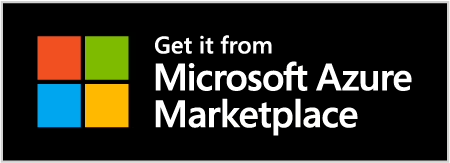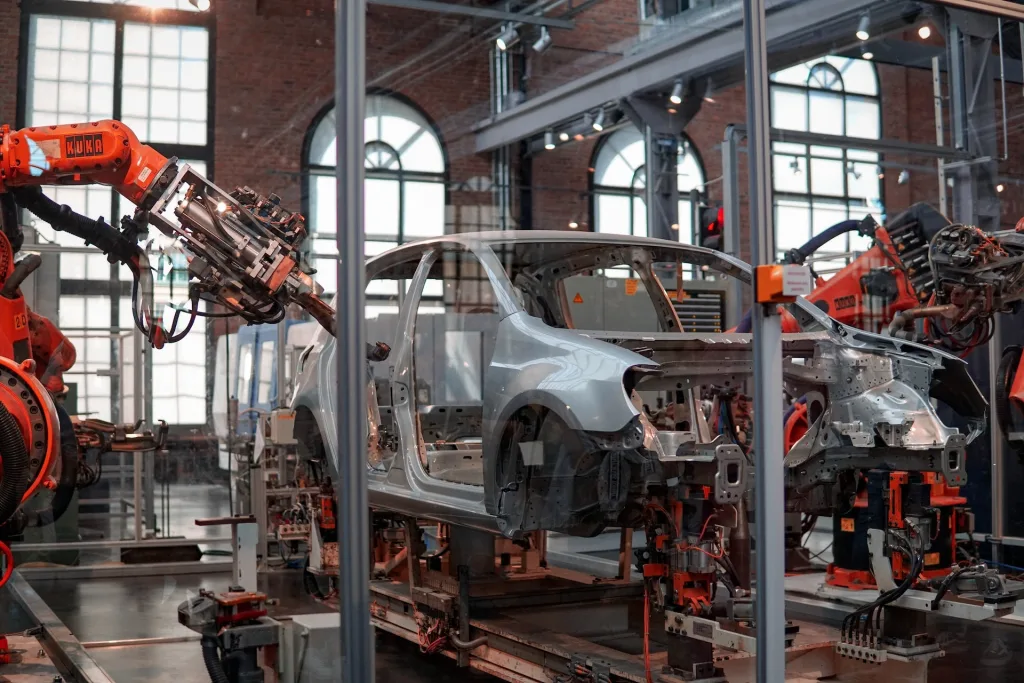During times of great uncertainty across the world of business and the world in general, it’s comforting to have a few constants to rely upon. One of these unchanging factors is the constant growth of RPA. Indeed, as each year passes, the Robotic Process Automation market gets bigger and bigger as the tech is adopted across a variety of different businesses and sectors.
In this article, we will explore the RPA market size from a number of different angles, such as industry, geographic region, and related technology. What’s more, we’ll also take a look at trends and predictions within the space and analyze the areas that will experience the best market growth over the coming years.
RPA market size

Understanding the market size of Robotic Process Automation means looking at three core areas. They are:
- Current market size
- Growth rate
- Future market size.
Let’s explore the RPA market size through these lenses.
1. Current Robotic Process Automation market size
According to several market intelligence firms, the global RPA market size in 2023 is around $3 billion. There is always some variance in these estimates, but there seems to be some basic consensus around that figure.
A Gartner RPA market size estimate can be found in the Gartner RPA Magic Quadrant 2023 report. The esteemed consultancy firm valued end-user software spending in the industry at $2.8 billion, up from $2.2 billion the previous year. We should note that the Robotic Process Automation market size Gartner suggests refers to 2022.
While it’s certainly possible to find market intelligence firms posting higher market size estimates, such as $5 billion, somewhere between $2.8 billion and $3.2 billion are the most frequently cited numbers.
2. RPA industry growth
The Robotic Process Automation industry is set for a startling growth over the coming years. Indeed, some analysts suggest that the RPA growth rate will stand at just under 40% per annum. A compound annual growth rate (CAGR) of nearly 40% is startling and only matched by cutting-edge sectors like Artificial Intelligence and the Pharmaceutical industry. However, other researchers are a little less positive. For example, some predict a CAGR of closer to 28% within the industry.
So, based on averages from various marketing intelligence firms, we can say that RPA CAGR is around 25% to 35%, which is a testament to the potential within the industry.
3. Future Robotic Process Automation market size
Predictions for the global Robotic Process Automation market size are rosy. As adoption and use cases grow, RPA technology will become embedded in a diverse range of vertices.
Predictions about the size of the RPA by 2030 are $13.4 billion. However, other analysts see more potential in the sector and predict a future global RPA market size of around $25bn.
The largest RPA market size prediction among researchers is $66bn by 2032, which seems like an outlier that was arrived at by conflating RPA with other related technology sectors.
So, it’s safe to predict the future Robotic Process Automation RPA market size will be somewhere in the region of $13 billion to $25 billion by 2030. For content, that’s about the current size of the entire NFL market. So, it’s pretty huge.
4. RPA Services market size
RPA market size can be split into two broad categories: RPA software sales and RPA service sales.
While implementing RPA solutions is far more user-friendly and speedy than, say, an Enterprise Resource Management (ERP) tool, there is still a clear requirement for expert help and guidance. RPA services ensure that organizations get the greatest impact from their automation tools, from requirement and discovery all the way through to maintenance.
According to Forrester, the RPA-related services market will peak in 2024, with a value of $16.3m, before declining slightly the following year. The implication is clear: RPA adoption will reach a saturation point once the tools achieve widespread adoption. However, it’s important to note that Forrester’s RPA market analysis does not suggest that RPA software spending will decline.
Interestingly, per the same Forrester report, services make up around three-quarters of the overall RPA market value. However, other RPA market reports suggest this number is closer to 60%.
These figures include RPA consultation, implementation, training, maintenance, and support from RPA vendors, system integrators, and software resellers. The cost of delivering RPA across the enterprise is closely tied to any projections of the overall market size, but it must also be seen as distinct from software spending to get an accurate picture of the RPA market.
5. How is the RPA market size calculated?
Most of the figures that estimate the Robotic Process Automation market size are provided by market intelligence firms. These firms commission researchers to delve into a variety of data from industry groups, governments, company financial data, valuations, and so on.
However, different companies use their own approach, which partly explains why there is a bit of variance within each market research team’s numbers. RPA market research firms do a good job of coming to these estimates, but due to diverse methodologies and even different levels of access to data, it’s best to treat the information as ballpark figures.
RPA market size by sector
Some sectors have adopted RPA solutions at different rates than others. Industries like Finance and Healthcare have made much of the early running, but other sectors are catching up as automation becomes a competitive necessity.
Let’s explore the RPA market size within a few of the biggest sectors.
1. Healthcare
Some estimates suggest that the RPA Healthcare market is worth around $300 million, with growth expected to hit closer to $2 billion or more by 2030, thanks to a CAGR of around 33%.
2. Banking, Financial Services and Insurance (BFSI)
The Banking, Financial Services and Insurance (BFSI) has been a major adopter of RPA tools. Estimates suggest the sector is worth over $522 million, with plenty of room to grow due to a CAGR of 31.7%.
3. IT and Telecoms
IT and telecoms are other big RPA market sectors. Solid data is hard to find, but some market intelligence firms suggest market share is around 22% with an overall size of just under $500 million for 2023.
4. Retail
The retail industry is another major player in RPA adoption. Market share is around 13%, according to business intelligence. Estimates for Retail industry RPA spending sit at around $250m per annum.
RPA market size by region
RPA adoption has happened at different rates across regions. There are a number of explanations for this phenomenon, including variance in economic maturity, openness to new technologies, and relative spending power.
If we explore the data, we can see clear differences in RPA uptake across different regions. For RPA vendors, this information is critical to understand because it points the way toward regional opportunities.
Global RPA market share by region.
- North America: 41%
- Europe: 28%
- Asia: 22%
- Latin American: 5%
- Rest of Europe, Middle East, and Africa (EMEA): 4%
While North America is the most mature market, this data highlights the potential of the global space. Latin America and the rest of the EMEA countries represent the next frontier for RPA. Asia is another market with a high potential for growth. We should expect further growth as Digital Transformation continues across the Asia-Pacific regions.
Despite the growth potential of less developed regions, North America retains a CAGR of almost 40%, according to RPA market analysis research. To a large extent, this development is down to uptake across the Banking, Financial Services and Insurance (BFSI), and the availability of government support and subsidies that assist with adoption.
RPA market share by vendor size
Another interesting way to look at RPA market size is to consider the concentration of market size among the major players in the industry. Research suggests that about 29% of the RPA market size is shared among the top 5 vendors.
This figure is a little lower than the concentration within other sectors, which suggests that there is healthy competition between vendors. The RPA industry does not have monopolies or duopolies, which is good news for end users who want competitively priced and varied automation solutions.
RPA-related market sizes
The scope of RPA is incredibly broad. The technology is useful across a wide and diverse range of different sectors. However, because it has several convergence points with other industries, it’s worth exploring market size through connected and related technologies, too.
These markets can help shine a light on the direction that RPA will take, as well as highlight innovation and potential within the space.
1. RPA and Hyperautomation market size
Hyperautomation is an approach to business processes that seeks to use a blend of different technologies to automate work and augment human operators.
Hyperautomation market size estimates for 2023 range from about $7 billion to nearer $11billion. CAGR is also highly variable, with forecasts anywhere between 20% and 30%. It’s worth noting that Gartner suggests the industry could be worth $1 trillion by 2026.
Hyperautomation growth areas
There is a huge desire for automation across sectors due to the technology’s ability to reduce costs, increase productivity, and meet regulatory demands. However, there are driving forces within each sector that will have a massive bearing on growth. Within the hyperautomation space, there are two particular fruitful areas worth our attention.
Digitization in manufacturing:
Digital transformation in the manufacturing sector is helping drive increased productivity and efficiency. The applications are endless, from customer service to predictive maintenance to information sharing. RPA and Hyperautomation are big parts of these trends.
Automation in manufacturing:
Automated manufacturing processing is another big growth area for Hyperautomation. Again, a desire for efficiency and cost-saving is a major driver. Inventory management, payment processing, energy efficiency, supply chain optimization, and better customer services are just some of the areas that are driving the growth of hyperautomation within the sector.
2. Intelligent Automation market size
Intelligent Automation (IA), also referred to as Intelligent Process Automation, refers to the blend of RPA and Cognitive AI. This technology will allow businesses to automate a wide range of tasks, including those that require decision-making and the parsing of unstructured data.
Some research estimates the size of the IA market to be around $14 billion in 2023, with a CAGR of 13%, leading to an overall market size of $50 billion by 2032.
The APAC market is considered one of the major drivers of IA, with analysts citing large-scale government investment as a key reason for these predictions. North America still retains the largest share of the market.
Furthermore, the adoption of RPA across different industries will lead to an increased need for complementary IA tools as businesses seek to scale and augment RPA solutions to help with decision-making, data entry, document processing, analytics, and more.
3. Automation COE market size
Companies are setting up Automation Centres of Excellence in response to the ever-evolving growth in RPA capabilities. Dedicated teams that can learn and explore the technology and develop strategies for adoption and successful implementation can give businesses a critical edge.
Self-sustaining internal teams will help organizations respond to the demand for automation, and RPA will play a critical role in delivering on the process discoveries and best practices that are uncovered by COE teams.
Currently, Automation Centres of Excellence are in their early stages. Global automation COE market size is somewhere around $300 million in 2023. However, with a CAGR of around 37%, it’s just a matter of time before the niche crosses the billion-dollar threshold. Indeed, analysts suggest a $1.5 billion target by 2027 is reasonable, with some indicating that the number will reach $2 billion in 2028.
While high development costs are seen as a potential barrier to COE growth, the efficiency, productivity, and future-proofing benefits should secure a strong ROI.
4. Business Process Automation market size
The Business Process Automation (BPO) sector and RPA have been bedfellows for years. Indeed, BPO profitability pressures were one of the big drivers of early RPA adoption.
Analysts suggest that the BPO market size is $13.7 million in 2023. However, with a solid CAGR of over 11%, the sector could be valued at $41 billion within the next ten years.
Workflow optimization and enhanced productivity are identified as the significant drivers. The future of BPO includes blending existing infrastructure with RPA, Hyperautomion, and AI tools. Just like with RPA, this will allow businesses to go beyond rule-based process automation and enter a new dimension of complex workflows. This process is already underway, with intelligent document processing (IDP) and ML-driven data analytics making marked impacts within the space.
Factors influencing positive RPA market growth
RPA market growth is phenomenal. Aside from the Pharmaceutical sector at 42.35%, no other industry comes close to matching RPA or AI CAGR rates. So, what are the major drivers behind these growth rates?
#1. The rise of attendant technologies
The stunning growth of AI technologies (ML, Generative AI, CVT, NLP, etc.) alongside the widespread adoption of cloud-based software presents an excellent opportunity for RPA. The obvious limitation of RPA includes its inability to deal with unstructured data or decision-making. Augmenting RPA with Cognitive AI will extend the relevance and use cases of the technology.
Perhaps the best way to look at this trend is that major RPA vendors are investing heavily in AI tools to add to their offerings. Secondly, RPA will act as a bridge between people and AI, allowing firms to wring the maximum from their technology investments. Third, cloud-based RPA systems will bring mobility to RPA tools and potentially change the meaning of work.
#2. Digital transformation in developing countries
The pandemic accelerated global digital transformation across all sectors. However, some areas, such as the APAC region, saw elevated levels of growth. As the business world ventures forward, more regions will modernize their infrastructure and mindset and understand the value of automation for driving efficiency.
One way to look at digital transformation across underdeveloped regions is to predict they will plot similar paths as developed economies. However, it’s reasonable to assume that the availability of RPA products could help speed run development and help change the fortunes of citizens within developing regions.
#3. RPA as a Service (RPAaaS)
RPA-as-a-Service (RPAaaS) adoption is booming. And it’s no surprise. RPAaaS offers a blend of consulting, tool customization, and AI/ML integration, all for predictable annual fees. ZAPTEST Enterprise provides this service but stands out from competitors because of unlimited licenses, which allow your RPA solution to scale with your business.
Challenges facing RPA market growth
While RPA market growth is assured, there are some headwinds that organizations must be aware of.
#1. Cybersecurity
The rush to implement innovative and cost-saving tools can mean that security is an oversight. Integrating RPA within a business means allowing the technology to interact with sensitive business and personal data. A failure to consider cybersecurity in the development stage could prove costly.
Test automation tools will provide an avenue to verify RPA software and ensure it meets the required standards. What’s more, data encryption, solid credentialing policies, and an investment in cybersecurity learning and development for all employees will also counter the problem.
Of course, it’s worth mentioning that because humans are the biggest point of vulnerability for cyber attacks, RPA implementation could provide the safest way to handle sensitive data.
#2. Lack of skilled workforce
A McKinsey report from a few years ago highlighted the paucity of skilled workers in the RPA space. Some of the areas where skilled workers are required include implementation, maintenance, and cybersecurity. This shortfall of RPA-trained engineers could slow down adoption and growth.
However, vendors like ZAPTEST help teams cross this divide thanks to user-friendly, drag-and-drop interfaces and the availability of dedicated ZAP Experts.
#3. Rise of AI automation
Forrester claims that RPA investment will decline due to the rise of AI automation tools. However, these predictions miss the point about the convergence of AI and RPA. AI will help teams implement more complex, end-to-end business automation.
Even the arrival of Generative AI capable of developing powerful RPA bots might not affect the RPA industry too adversely. The future destinations of RPA and AI are intertwined, with Hyperautomation as one of the final stops.
Robotic Process Automation market trends to watch out for
RPA market trends move quickly. Here are a few to look out for over the coming years.
#1. Hyperautomation
Hyperautomation is the endpoint of a blend of various technologies, like RPA, AI, ML, cloud computing, IoT, sensors, and process automation. It describes a credo where what can be automated will be automated.
As businesses make early forays toward hyperautomation, we can expect to see the IT robotic automation market grow, with more investment in both software and infrastructure.
#2. Analytics
The increasing availability of analytics tools will help bring the benefits of machine learning to RPA applications. Again, the big plus here is that the introduction of data analysis will facilitate game-changing insights and predictions, which will open up new automation dimensions.
#3. Generative AI integration
Large Language Models (LLMs) like ChatGPT will increase the scope of RPA solutions by allowing teams to create business processes capable of understanding language, sentiment, and mood.
The obvious advantage here is an increase in customer self-service capabilities. Generative AI bots can help businesses achieve high-quality, 24-7, scalable customer care. What’s more, these tools will assist marketing teams in writing copy and content and help all departments synthesize large quantities of unstructured data into formats that RPA bots can process.
#4. Movement to the cloud
In 2022, on-premises deployment made up around 80% of the RPA market. To a large extent, this decision was about data security. However, enhanced cybersecurity practices will allow for cloud-based or remote RPA deployments. The benefits include lower costs, easier implementation, and less maintenance.
#5. The democratization of RPA
Cloud-based RPA solutions will open the technology up to smaller businesses. Currently, about 60% of RPA market share is large-sized enterprises. However, as RPA tools become more accessible, SMEs and entrepreneurs can drive efficiency with these tools. These changes could open the door to a new era of innovation and productivity for all.
RPA market size: Final thoughts
Robotic Process Automation market size is a great metric to measure the health of the industry. These figures demonstrate the global appetite for tools that are capable of automating predictable, rule-based tasks and, thanks to advances in Cognitive AI, more complex decision-making tools.
While the future always turns out a little bit different from what experts predict, we can be confident that businesses will always chase down operational streamlining, greater productivity, and cost savings. RPA is a byword for these business benefits, so the technology will form an instrumental part of a move towards a new era of work where human creativity is allowed to flourish thanks to process automation.








